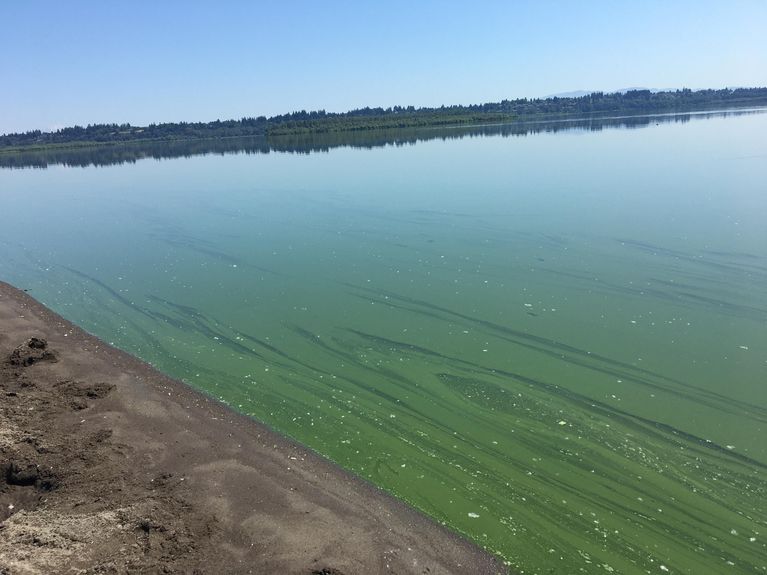The research pinpointed the organisms at source of dangerous algae bloom.
A new study pinpoints the type of toxic algae that bloomed in Detroit Lake in 2018 and made the drinking water in Salem potentially hazardous for some people to drink.
Theo Dreher, emeritus professor of microbiology at Oregon State University, led an effort to collect samples from 10 lakes that face the risk of harmful algae blooms. The blooms produce toxins that can cause health problems for people, dogs and wildlife.
Dreher and fellow researchers analyzed the genetics of the microscopic cyanobacteria, also known as blue-green algae, in the samples.
The results, published this month in the journal Harmful Algae, revealed new information about exactly which cyanobacteria organisms produce specific toxins.
“And that’s sort of important, because once you know that organism you can study it in isolation and start to look at the factors that lead to its massive growth in a bloom,” Dreher said. “You really can’t get to the bottom of why these blooms are being produced without specific information.”
Dreher said knowing which organisms to study will be key to learning how to prevent harmful algal blooms in the future.
His study found two types of cyanobacteria in Oregon’s Detroit Lake that were producing two different toxins. One of the toxins is known as cylindrospermopsin and the other is an uncommon form of microcystin, a recognized liver toxin.
In 2018, both toxins were found in Salem tap water. Authorities issued health advisories to alert vulnerable people not to drink the contaminated water.
Dreher said scientists knew these toxins had been produced in Detroit Lake previously, “but now we know the precise toxin types and the organisms making them.”
Dreher’s research team also found microcystin in Odell Lake in the Cascades, Lake Billy Chinook in Central Oregon and Junipers Reservoir in Southern Oregon, where 30 steers died in 2017 from drinking toxic water.
The team found the same type of cyanobacteria had caused harmful algal blooms in all four of those lakes.
Cyanobacteria are found in all kinds of water bodies, and they can quickly multiply into harmful algae blooms with warm water temperatures and excess nutrients that can come from fertilizer runoff. Some strains of cyanobacteria can produce neurotoxins, and most toxin-producing algae can cause gastrointestinal illness and skin rashes.
A survey by the Environmental Protection Agency in 2007 found the toxin microcystin in one out of every three lakes sampled across the country.
Dreher ran a lab focused on harmful algal blooms at OSU for more than a decade and is still working on the problem in retirement.
“It’s an ecological dysfunction that you can see from satellite images from space and is causing a lot of concern worldwide,” he said. “We’ve seen much more of these and much bigger events, more frequent events, longer events of visible blooms that are stinky and that can be toxic.”
Scientists are anticipating even more harmful algal blooms with the warmer water temperatures that come with climate change.
“The good news is that not every cyanobacterial bloom that occurs in our lakes is toxic, although it is always wise to follow the rule of avoiding contact when there’s green growth in the water,” Dreher said.
If a person or a pet comes in contact with water that may contain harmful cyanobacteria, the Centers for Disease Control and Prevention recommends immediately rinsing off with fresh water. Dogs should not be allowed to lick the contaminated water off their fur, and a veterinarian should be called right away.
Anyone swallowing water near a harmful algal bloom should immediately call a doctor or poison control center.
Article was originally published by OPB.

